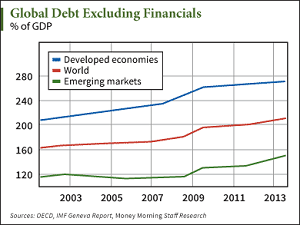By Jonathan Stempel
NEW YORK (Reuters) - Goldman Sachs Group Inc (GS.N), Germany's BASF SE (BASFn.DE) and two other big platinum and palladium dealers have been sued in the United States in what the plaintiff's law firm called the first nationwide class action over alleged price-fixing of the metals.
In a complaint filed on Tuesday in the U.S. District Court in Manhattan, units of Goldman, BASF, HSBC Holdings Plc (HSBA.L) and South Africa's Standard Bank Group Ltd (SBKJ.J) were accused of having conspired since 2007 to rig the twice-daily platinum and palladium "fixings" and the prices of futures and options based on those fixings.
The plaintiff, Modern Settings LLC, a Florida-based maker of jewelry and police badges, claimed metals purchasers lost millions of dollars.
The defendants illegally shared customer data, used that information to engage in "front-running" of expected price moves, and manufactured phantom "spoof" orders, according to the plaintiff.
Platinum and palladium are used in catalytic converters to curb vehicle emissions, and are also used in dentistry and jewelry.
On Oct. 16, the London Metal Exchange said it will on Dec. 1 take charge of platinum and palladium price fixing, and use a new electronic platform.
The Hong Kong Exchanges and Clearing Ltd unit said the platform would replace a benchmark system established in 1989, and run by Goldman, BASF, HSBC and Standard.
The complaint said such changes "have come too late" for Modern Settings and other prospective class members. The complaint seeks unspecified damages for the defendants' alleged violations of U.S. antitrust and commodities laws.
Regulators around the world have tightened scrutiny of pricing benchmarks in recent years after uncovering evidence of rigging in currencies and the London Interbank Offered Rate.
The more stringent regulation has spawned new price setting platforms for gold, silver, platinum and palladium. Metals purchasers have filed similar lawsuits this year accusing banks of gold and silver price-fixing.
Goldman spokesman Michael DuVally and HSBC spokeswoman Juanita Gutierrez declined to comment. Standard Bank declined to comment.
A spokeswoman for BASF, the world's largest chemicals maker, said the group could not comment because it had not been notified of a complaint.
BASF generated 2.36 billion euros ($2.95 billion) in precious metals trading revenue last year. The London-based trading business is part of BASF's Catalysts division, which is the world's largest maker of catalytic converters.
The law firm Labaton Sucharow represents Modern Settings.
The case is Modern Settings LLC v. BASF Metals Ltd et al, U.S. District Court, Southern District of New York, No. 14-09391.
(Additional reporting by Ludwig Burger and Frank Siebelt in Frankfurt and David Dolan in Johannesburg. Editing by Andre Grenon and Louise Heavens)
AJ adds: There have been complaints of illegal trades in a number of entities including interest rates. The price manipulation in metals is especially egregious. The role of the FED is especially dangerous. The FED is allowed to operate in the dark and without audit. AS a consequence, it is alleged that gold stored by the FED has been used to manipulate gold price and that the gold has either been sent to the East or is sold to multiple customers. AS a consequence, countries are beginning to demand repatriation of their gold at the FED. Venezuela was able to get all its gold, but Germany only got a pittance. The Dutch got about 1/3 and voices are heard in France to get their gold back. The Swiss have a referendum in December to restore their gold reserves that were depleted at the wrong time. Meanwhile, gold sales are brisk.







 Republicans grabbed hundreds of state legislative seats. They now control more seats in state capitals than at any time since the 1920s, unofficially. Down-ticket is where Republicans really blew out the Democrats.
Republicans grabbed hundreds of state legislative seats. They now control more seats in state capitals than at any time since the 1920s, unofficially. Down-ticket is where Republicans really blew out the Democrats.
 As a group, the report's authors expect interest rates worldwide to remain low for a "very, very long time," so that all borrowers (governments, companies, and individuals) will remain solvent and keep paying the interest on their debts.
As a group, the report's authors expect interest rates worldwide to remain low for a "very, very long time," so that all borrowers (governments, companies, and individuals) will remain solvent and keep paying the interest on their debts.